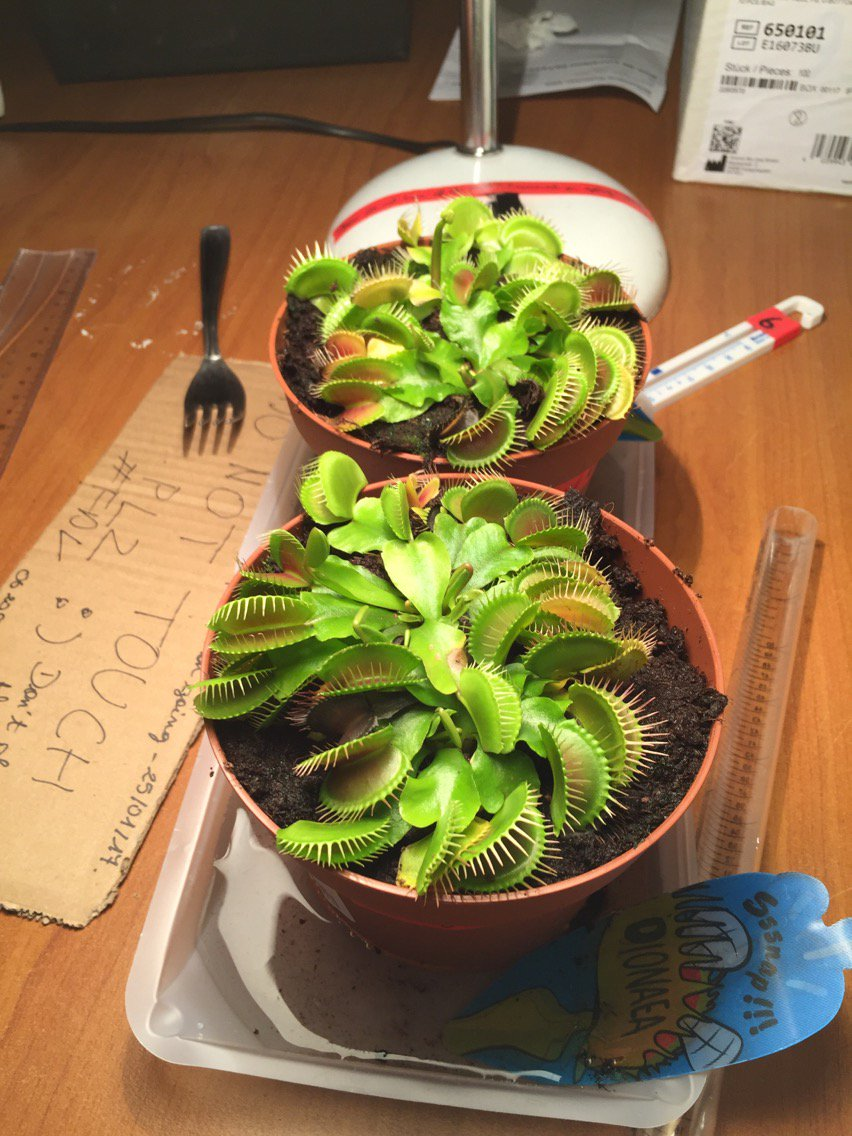The Venus fly trap, known in the scientific community as Dionaea muscipula is one of the few plants in nature that is capable of rapid movement, along with Mimosa pudica. The plant possesses traps that are triggered when the hairs lining their inside are bent or touched. Within seconds, a wandering insect will be unable to escape and will be digested over the next ten days before the traps open again. This feature allows Dionaea to survive in poorly nutritious soils in the swamps of North and South Carolina, in the United States. Dionaea is a type of carnivorous plant that is easy to buy and cultivate, making them a prime choice for scientific study.Considering its ability to act in the blink of an eye, we wanted to know if this plant could react as fast as an electric sensor. We tried using an FSR sensor, but realized it was not sensitive enough to feel the force caused by the weight of a fly (between 0.1 and 0.3 grams), so we decided to use a Piezo element with Arduino. We prepared our newly purchased Dionaea under a bright lamp in a dark room and placed them in a dish containing osmotic water. We watered them regularly except over the weekend when the lab was not accessible. We also made sure the plants lived in an environment that was between 25 and 30°C in order to keep them from going into vernalisation, which is like hibernation but for plants (Picture 1).
 |
Picture 1
The Venus Fly Trap we used
in our experiment.
Picture by Lina V. |
We
designed an experiment that consisted of dropping fake flies (made of
plastic), shaped like small rugby balls, that possessed different
weights onto the Piezo or the Fly trap while filming. We also recorded
Piezo data from the Arduino port using a Python code and saved them in
an electronic file. We 3D printed the same plastic flies at different
densities to vary weight but not size and used a clear plastic tube to
assure ourselves that we dropped the flies from the same distance every
time. We used three different weights to simulate our flies: 0.14, 0.19,
and 0.22 grams. In addition we planned three replicas of each weight
and repeated the experiment with each fly 3 times (Picture 2 & 3).
 |
Picture 3
Our Piezo Element setup
connected to Arduino and
a computer.
Picture by Elena C. |
 |
Picture 2
Our Plant experiment
Picture by Lina V. |
We then viewed all footage frame by frame to determine the time it took for a trap to close after being fed and for a sensor to record the touch of the fly and calculated the average reaction time using all this data for both the Dionaea and the Piezo element.It took us a long time to collect enough data from the plants for us to present any results because every time a trap closes, it takes about 12 hours for it to open again. This meant we could only repeat the experiment once a day in our schedule. When we finally collected enough data to plot it, we noticed that the graphs obtained from the Piezo sensor and the Venus flytrap were similar in that the response time hardly varied when the fake fly became heavier, but the time scales on each graph were very different : It usually took about a second for the plant to react to a stimulus and approximately 50ms for the Piezo sensor. We applied some statistical tests to our data and found that no conclusions could be confidently drawn (Figure 1).
 |
Figure 1 : Average response time of the Piezo sensor
and the Venus Flytrap when facing a stimuli
|
In the end it was clear that the Piezo element reacted much faster than the Venus Flytrap, but that the weights we used did not have any clear effect on its response time on either of our subjects. Perhaps weight has no influence, or we would have had to use much heavier or much lighter flies than the ones we studied.For more informations : Here is an article about the speed and mechanisms of Dionaea traps. If you want a quick introduction on how the Venus Flytrap closes, take a look at this video or, if you want to know more about Venus Flytrap take a look at this 9 facts video.If you want to know more about our protocol, data collected or coding elements, you can find it on our GitHub page. You can also find all the tweet we posted to inform people about our daily adventure in this storify :) © Elena CALAMAND, Daniel LOEB, Lina VIGNERON

No comments:
Post a Comment